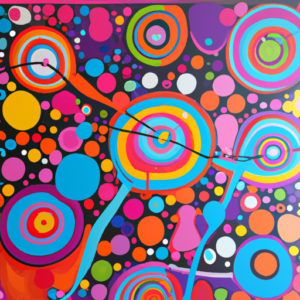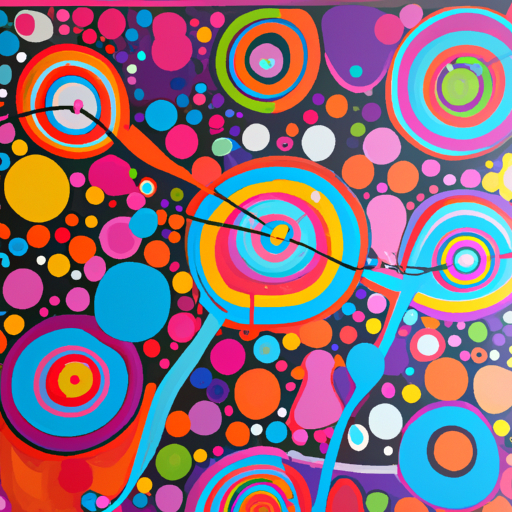Hey there! Ever heard of skin pigmentation? It’s a common occurrence and can be caused by a number of different things. I’m gonna break down what it is, the causes, types, treatments, and prevention so you can make sure your skin stays looking its best!
Skin pigmentation is an alteration in the color of your skin due to the body producing too much or too little of the pigment melanin. Melanin gives our skin its unique hues, so when it’s off balance it can cause discoloration in certain areas.
Now, there are a few factors that can affect the levels of melanin in your skin, including sun exposure, genetics, and hormones. Sun exposure is the most common cause of skin discoloration, as UV rays stimulate melanin production. Similarly, hormonal changes can also influence pigment levels such as during pregnancy, menopause, or taking certain medications. Genetics play a role too, as some people are just more prone to pigmentation.
So, now that you know the causes, let’s go over the two main categories of skin pigmentation: hyperpigmentation and hypopigmentation. Hyperpigmentation is an increase in melanin resulting in dark patches, while hypopigmentation is a lack of melanin causing paler spots.

Luckily, there are several treatments available for both types of skin pigmentation. Topical creams and ointments are often used to lighten darkened skin, while laser therapy is a popular option for those looking to brighten pale patches. Chemical peels and microneedling may also be recommended, depending on the severity of your condition.
Finally, prevention is key when it comes to protecting your skin from pigmentation issues. Wear sunscreen every day with an SPF of at least 30 and reapply often – even on cloudy days. Avoid tanning beds altogether, as UV rays from these can further aggravate existing conditions. And don’t forget to limit your time in the sun, especially between 10am and 2pm when UV rays are the strongest.
That wraps up my intro to skin pigmentation. Hopefully you’ve got a better grasp on the causes, types, treatments, and prevention methods so you can keep your skin looking great!
Causes of Skin Pigmentation
No one really has a crystal ball to answer why some folks are blessed with a glowing tan, while others pale in comparison. That’s the mystery surrounding skin pigmentation. But, we do know the contributing factors that can lead to the varying shades of complexion.
Sun exposure is probably the biggest factor in causing skin pigmentation. The sun’s ultraviolet rays basically trigger a reaction in the skin, prompting our bodies to produce more melanin as a way to protect itself. While a little sun is good for us and can give us a nice golden hue, too much will start to darken our complexions over time.
Genetics also plays an important role in how our skin is pigmented. After all, it’s in our family bloodline! Some people may have a predisposition towards lighter or darker skin. You could be somewhere in between. It’s just a matter of how well your body handles ultraviolet radiation from the sun.
The last major cause of skin pigmenting has to do with hormonal changes. This usually affects women the most. During pregnancy, for example, the body’s hormones change, causing spots to form on their skin. This uneven pigmentation is known as chloasma and typically fades after childbirth.
Types of Skin Pigmentation
Wondering what type of skin pigmentation you have? It can sometimes be hard to figure out which one is the culprit and it’s important to know the differences between them. There are two main types of skin pigmentation: hyperpigmentation and hypopigmentation. Let’s break ‘em down for ya.
Hyperpigmentation
This is what most people think of when they hear the term “skin pigmentation”. Hyperpigmentation occurs when there is an excess of melanin in your skin-causing areas to appear darker than the surrounding skin. It usually appears as spots or patches on the skin, and can range from brown to black in color. While this isn’t a health issue per se, it can cause issues with how you feel about your appearance.
Hypopigmentation
On the flip side, hypopigmentation is a condition where you have an underproduction of melanin in certain areas of your skin. This results in lighter colors of skin pigmentation, often appearing as white patches or spots. Hypopigmentation can happen due to injury, scarring, inflammation, or even because of a fungal infection. If you think you might have hypopigmentation, it’s best to get it checked out by your doctor right away.
Treatments for Skin Pigmentation
If you’re dealing with skin pigmentation, there are several treatments available that can help restore your complexion. From topicals to lasers and beyond, here’s what you need to know.
First off, topical creams and ointments may do the trick. A dermatologist can prescribe a cream or ointment to reduce or fade discoloration. Popular products include Azelaic Acid, Hydroquinone, and Retinoids.
Laser therapy is another option for those struggling with discoloration. This treatment uses light to remove blemishes, but it’s not for everyone. It’s pricey and can cause irritation, so make sure you consult a doctor before exploring this avenue.
Lastly, chemical peels can be beneficial for some people. Basically, it involves applying a chemical solution to the affected area to exfoliate the top layers of skin. This may help reduce discoloration, but, again, you should speak to a professional before attempting this procedure.
No matter which treatment you decide to pursue, make sure to use exploratory language and ask lots of questions. Make sure you understand the potential risks and benefits of each option before committing. With this knowledge in hand, you can find the right solution for you!
Prevent Skin Pigmentation
Want to keep your skin looking its best? We’ve got the scoop on how to prevent skin pigmentation. From wearing sunscreen to avoiding tanning beds, there’s lots of advice about what you can do to keep your skin healthy.
First off, it’s important to lather up with sunscreen before getting outside. SPF 30 or higher is optimal – and don’t forget to reapply every two hours, especially if you’re sweating or swimming.Not only will this help reduce sun damage from UVB rays, but it’ll also help protect you from UVA rays, which are responsible for hyperpigmentation (aka dark spots).
Another no brainer – skip the tanning bed! Tanning beds are a major culprit when it comes to premature skin aging and pigmentation issues. If you must have a “tan” then fake it with self-tanners like creams and sprays – just make sure to buy ones that are designed specifically for face use.
Lastly, be mindful of the amount of time you spend in the sun – especially if you’re fair-skinned. Limit yourself to 30 minutes during peak hours and make sure to cover up with clothing and hats. Doing so will help prevent sunburns, which can lead to skin pigmentation.
With these tips at the top of your mind, you can keep your skin looking its best and avoid any pesky pigmentation problems. So ditch the tanning beds, rock that sunscreen and be mindful of your sun exposure. You’ll be thanking yourself later.
Conclusion
As you can see, skin pigmentation can be both a cosmetic and health concern. The good news is that there are treatments and preventive measures available to help prevent skin discoloration from occurring. It’s important to protect yourself from the sun by using sunscreen with broad-spectrum protection and avoiding tanning beds. It’s also important to limit your time outdoors during peak sun hours. If you think you may have an issue with skin pigmentation, talk to your doctor about possible treatments such as topical creams and ointments, laser therapy, and chemical peels. With the right preventive measures and treatment options, you can keep your skin looking its best.
